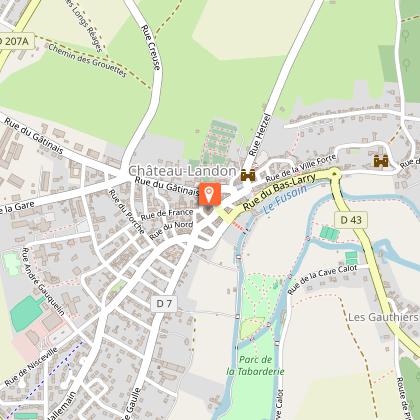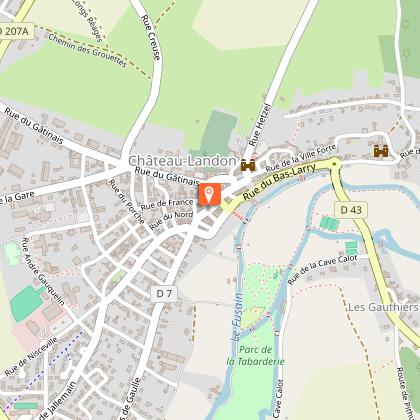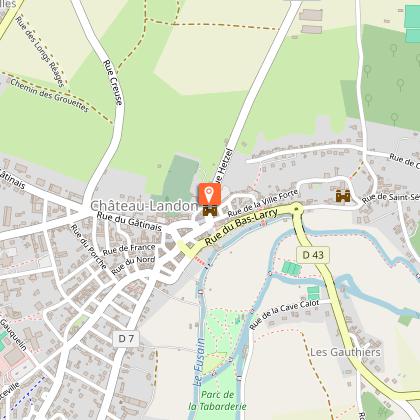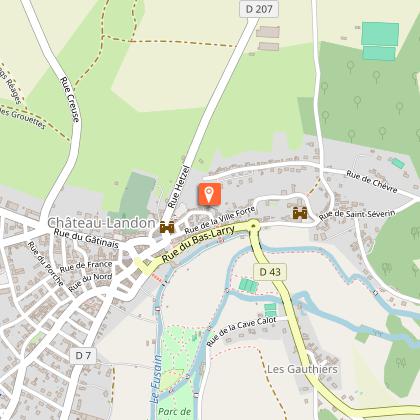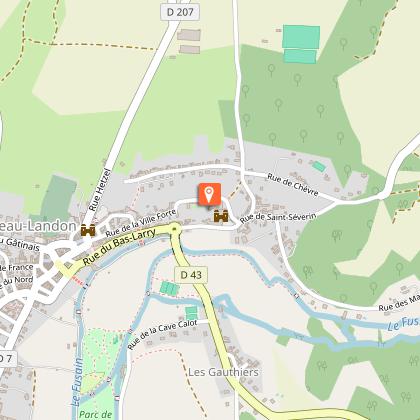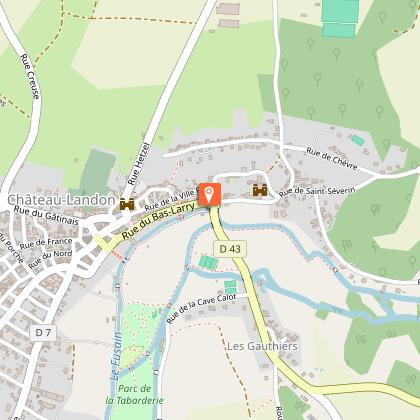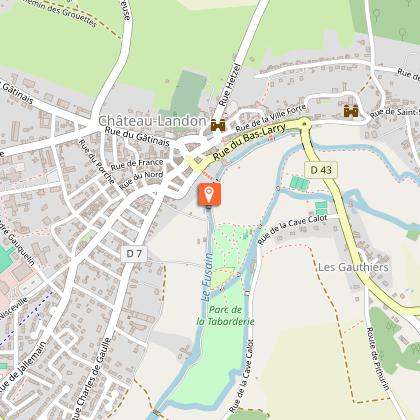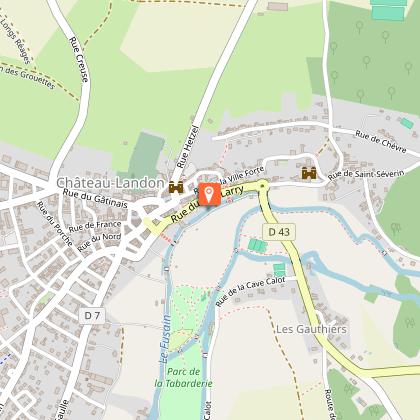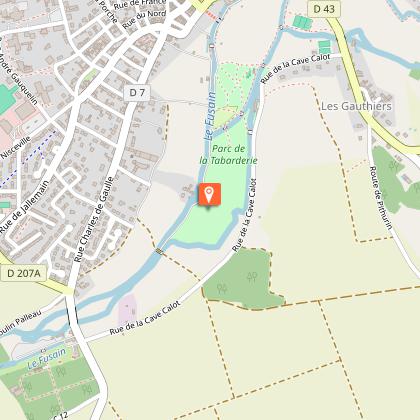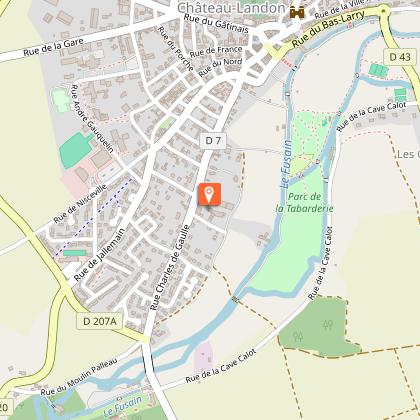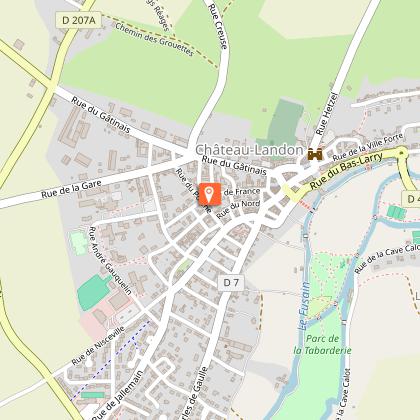Alert
Alerts
Discovery tour of the medieval city of Château-Landon
IGN cards











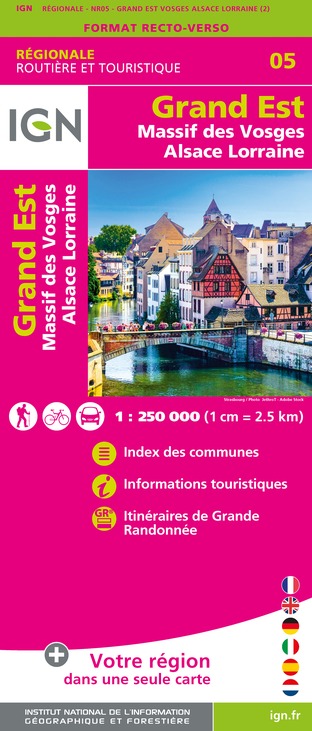
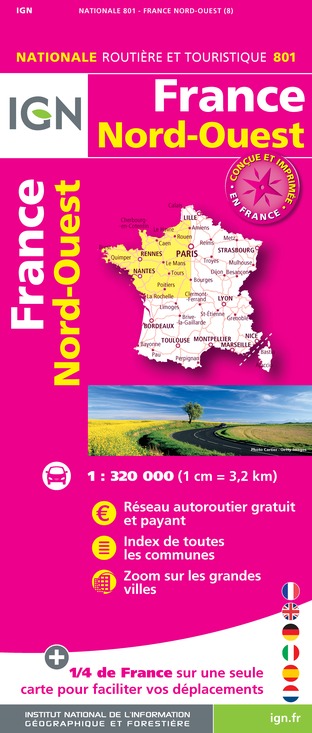

Description
1 hour from Paris, the medieval city of Château-Landon perched on its rocky outcrop invites you for a bucolic stroll.
This walk will give you a panoramic view of the monuments, the Tabarderie park and the river Fusain lined with 17 wash houses.
Give it a listen, it's a site to listen to! As you stroll around the medieval town of Château-Landon, you'll find 12 tourist information panels and an orientation table equipped with QR-Codes, so you can make the most of this acoustic walk, and get an application to read the QR-Codes you'll find on the tourist information panels.
Technical Information
Altimetric profile
Starting point
Points of interest
Additional information
Updated by
Office de Tourisme Gâtinais-Val de Loing - 16/08/2025
www.tourisme-gatinaisvaldeloing.fr
Report a problem
Open period
All year round daily.
Contact
Phone : 01 64 29 38 08
Email : tourisme@ccgvl77.fr
Website : www.tourisme-gatinaisvaldeloing.fr
Facebook : www.facebook.com/officedetourismegatinaisvaldeloing/
Type of land
Hard coating (tar, cement, flooring)
Grit
Data author

The Cirkwi brief
Venturing just an hour away from Paris, the medieval city of Château-Landon, curated by the Office of Tourism of Château-Landon, offers a picturesque escape atop its rocky spur. This 3 km journey not only introduces one to panoramic views that intertwine history with natural beauty but also reveals the serene flow of the Fusain river, adorned by ancient laundries. As you wander, be enchanted by the narrative of history and architecture through 12 informative panels. It’s a stroll through time, where every step brings a new discovery, softly narrated by the breeze that whispers tales of yore through the leaves.
Technical Itinerary Overview
Covering a distance of approximately 3.05 km, this walking route begins at Rue de Nemours, 77570 Château-Landon. Transitioning from an altitude of 71 meters to a maximum of 104 meters, the path offers a modest elevation gain of around 86 meters. The carefully plotted course promises an immersive delve into the town’s medieval past, ensuring an engaging yet manageable trek for visitors of all ages. The Office of Tourism of Château-Landon has designed this route to balance historical exploration with physical accessibility, making it a comprehensive experience.
Seasonal Guides and Safety Tips
As your local guide, I recommend spring for its riot of colors and autumn for the enchanting golden hues that envelop Château-Landon. These seasons not only offer the most picturesque landscapes but also mild weather for a pleasant walk. Always check the weather before embarking and wear suitable footwear for cobblestoned paths. For safety, keep hydrated, especially in summer, and stick to the marked trails. The winter presents a quiet charm, though paths may be slippery. Regardless of the season, always respect the site's serenity and heritage by staying on designated routes.
Historical Heart of Seine-et-Marne
Château-Landon, nestled in the Seine-et-Marne region, is a historical beacon that has shone brightly since the 12th century. Once a vital crossroad of commerce due to its proximity to Provins, it reflects a rich tapestry of France’s medieval past. Its strategic importance was further underscored when Foulques IV surrendered it to the French king in 1068, marking the beginning of its royal affinity. Delving into Château-Landon is to wander through the annals of French history, where the echoes of the Plantagenêt dynasty and its transformation from a medieval powerhouse to a place of royal reprieve can still be felt.
Climate Insights for Ideal Visit
Château-Landon: Weather Patterns Overview
The region experiences a temperate climate, with distinct seasons that each bring their own charm to Château-Landon. Winters are generally mild, rarely seeing heavy snowfall, while springs burst with fresh blooms under a mild sun. Summers can be warm, making early mornings or late afternoons ideal for exploring. Autumn wraps the city in a mesmerizing palette of colors, making it a favorite for many. The best times to visit are late spring (May to June) and early autumn (September to October), when the weather is most conducive to outdoor activities and the city’s beauty is at its peak.

